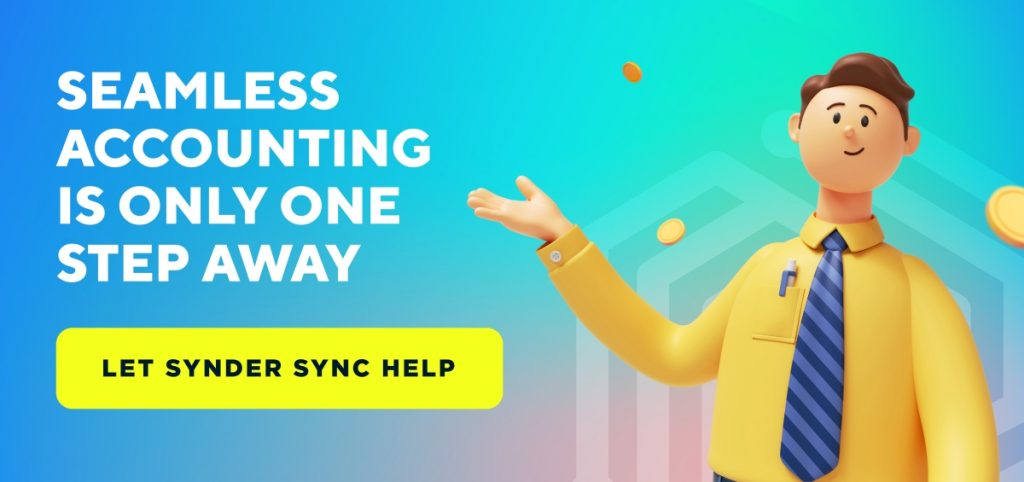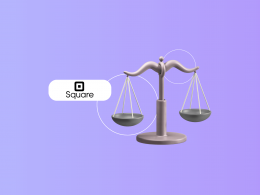How much can payroll errors cost a business? The American Payroll Association found out that companies using traditional methods of employee timekeeping would show an average error rate between 1-8%. Besides, 33% of employers make payroll errors that cost billions of dollars annually. A study by QuickBooks Payroll claimed that 18% of small business employees would quit after a single late paycheck.
With these stats in mind, you might want to take payroll seriously. Moreover, cash flow reduction and mass transition of employees to remote work due to and after the pandemic highlighted the payroll digitalization and employee data accuracy problem being critical to the survival of SMBs. With tightened budgets, there can be no resources to cover IRS penalties, wrong withholdings, and incorrect time calculations.
At this point, you might welcome any assistance to help you manage payroll more accurately and efficiently. And it’s where payroll apps can fill in the gap. Below, we’ll overview the hardships small business owners can face managing payroll and how payroll software helps facilitate it. We’ll also look at some small business payroll solutions you might find helpful.
Hop on reading to learn more about payroll software for small businesses:
1. Peculiarity of small business payroll
2. Typical payroll challenges small businesses owners face
3. How does payroll software work?
4. How much may small business payroll software cost?
5. How to choose a payroll app for your business?
6. Payroll software for small businesses to look at in 2026
Peculiarity of small business payroll
So, what’s small business payroll? In a nutshell, it refers to the processes set up to ensure your employees, both full-time and contractors, are paid for their work accurately and timely, in compliance with all the legal requirements of social security and tax withholdings. While it may sound simple, tracking employee time and paying salaries are just a little bit of payroll, like a visible tip of an iceberg with a much more substantial part hidden under the surface. Payroll, at a closer view, encompasses multiple aspects of payment and reporting, including:
- Employee records and time tracking;
- Calculating salary and wages;
- Payment processing and distribution;
- Employee tax withholding and deductions;
- Tax reporting and filing (federal, state, and local);
- Paid leaves and sickness;
- Overtimes;
- Benefits;
- Accounting;
- HR compliance.
At this point, well-established payroll processes are a tool for small business owners that helps better understand their cash flow, telling how much cash goes every month on salaries, benefits, and other employee payments.
The mentioned above is true for businesses regardless of their size. However, for a small business, the difference might lie in the lack of resources to handle payroll properly. While bigger companies might have the luxury of an HR department to deal with payroll, many small businesses might not have access to such a privilege, having just one employee (often a bookkeeper) to do payroll or taking care of it themselves.
Typical payroll challenges small businesses owners face
Let’s face it: managing payroll can be stressful and time-consuming, especially for small business owners who already have so much on their plate. Payroll processing can challenge small businesses in many ways, including employee misclassification, compliance with tax and other regulations, and employee record keeping. Let’s break them down in more detail.
- Misclassification
Small businesses, just like large companies, might have both full and part-time workers, as well as independent contractors and temporary employees. Depending on the category, some employees can be entitled to benefits and unemployment compensations, while others (like independent contractors, for example) can’t. For full-time employees, it’s usually a company that withholds taxes, while contractors should handle taxes themselves. It’s critical to correctly categorize them to avoid penalties from the IRS for miscategorization (which is a serious violation).
- Failing to comply with tax regulations
As you know, businesses are responsible for withholding and paying employment taxes. So, it’s critical to calculate them correctly and pay on time. The IRS is particularly strict about tax violations, with no regard to whether it’s done on purpose or by mistake. At this point, a small error can cost a business a lot.
- Employee record keeping
Employee record keeping is integral to any business having at least one employee. By the Fair Labor Standards Act (FLSA), businesses are obliged to keep employees’ records for three years (at least) in case of audits and other formal checks. Moreover, it’s critical to keep the records updated so that if an employee moves to another place of living (i.e., changes their tax jurisdiction), a business complies with the corresponding regulations.
- Remain up-to-date with the change in employment laws and regulations
As if to complicate matters, changes to employment laws and regulations evolve regularly, adding the task of staying up-to-date to an already substantial load of a small business owner’s routine. Besides, not every SMB can afford regular training for employees responsible for payroll.
- Employee data protection and security
Apart from collecting and keeping all the employee data, which can be pretty time and effort-consuming, businesses must comply with data security regulations and take measures to protect sensitive information (such as employees’ medical records, for example) from loss or disclosure. Otherwise, a business can be subject to a lawsuit with all the associated costs (apart from penalties).
At this point, it becomes clear that manual payroll management can be the biggest challenge for a company’s payroll. Unless you have one employee and don’t plan to grow and expand your resources, you might need substantial time and effort to set up the payroll system and manage it properly. And while solutions like Excel can be an option at your very start, they can’t scale for growth. Moreover, with manual data entry involved, they remain highly error-prone. And it’s where payroll apps come into play.
How does payroll software work?
Payroll software usually means solutions that help businesses handle their payroll system by automating various processes. Those can include keeping pay records, salary and wages calculation, employee time tracking, compensation management, payroll taxes, paid time off, year-end bonuses, benefits, and insurance. The number of features and the level of automation can vary from app to app. Even the simplest payroll apps can offer a basic feature set capable of calculating employee compensation and tax withholdings. It helps make life much easier for business owners who want to keep payroll management in-house or, for some reason, can’t outsource it. More sophisticated systems can comprise a wider range of options, covering the whole payroll cycle, bonuses, benefits, and more.
Often, such systems include employee portals, where people can fill in and track their working hours, plan vacations, or insert sick days, allowing them to have more control of their part of the payroll.
Besides, payroll apps can often connect with accounting platforms, helping businesses track the payroll as a part of their overall cash flow more effectively.
The types of payroll apps for small businesses
On-premise payroll software requires downloading and installing before you can use it. Most often, it’s license-based and requires a one-time payment for a license. However, you might still need to pay for updates and support. There is a difference between on-premise vs cloud software.
Cloud-based payroll apps are usually offered under a Software as a service model with various subscription plans. You can reach your cloud-based payroll system from anywhere using a web browser.
Mobile payroll apps are software that is created with mobile users in mind. They can be both browser-based and standalone apps that you download on your mobile device. Often, mobile solutions are responsive apps, which means they can adjust to whichever screen size and resolution, orientation, or platform. It makes them perfect for any devices, be it a smartphone, laptop, desktop, or tablet.
The biggest benefits of payroll apps
Payroll automation can tremendously help small businesses manage payroll in a more efficient way by facilitating the most complex tasks of tax calculations, protecting data better, minimizing the risk of errors and disclosure of sensitive information. Besides, it helps increase employee awareness of the payroll policies, ensuring their overall confidence and satisfaction with working for a company. But let’s take a more detailed look at the biggest benefits of payroll software for a small business.
Save time and resources
The biggest and most obvious benefit of payroll software is that it can tremendously reduce the processing time, automating a substantial part of the payroll: from recording employee information to tracking working time to preparing paychecks. It can help the payroll department or responsible individuals improve their performance and distribute their resources more efficiently.
Facilitate employee time tracking
Payroll apps enable employees to easily fill in and manage their working hours and ensure they have accurate time records by the end of the month. At this point, they also simplify the life of HRs or bookkeepers, allowing them to automatically calculate the payable hours, overtimes, etc.
Build transparency
Payroll software featuring employee portals help build more trust among employees, as they always have access to their data and calculations, helping them keep an eye on their records, time tracking, benefits, etc.
Ensure accuracy
Payroll software enables businesses to make more accurate calculations of salaries, benefits, overtime payments, tax deductions and withholding, etc. Moreover, it eliminates the risk of human errors, helping businesses offer their employees more confidence in the accuracy of their paychecks and other necessary payments.
Improve data security
Small business payroll software usually comes with built-in security measures that allow it to protect sensitive employee data. Often, such solutions offer different levels of access to data, ensuring only employees and those responsible for payroll can access the records.
Stay compliant
It can be hard to follow all the changes to employment regulations on time. Payroll software providers usually keep an eye on the changes and updates, timely introducing them into their solutions, which allows their users to always stay compliant.
How much may small business payroll software cost?
With so many payroll apps available on the market, it’s pretty obvious that their pricing will differ. There’s no single answer to how much small business payroll software costs. On average (if we take some most popular solutions), a fully featured payroll management software might cost you somewhere between $15 and $25 per month plus $2 to $5 per employee for the basic functionality. Some vendors might not charge you per employee.
Small business payroll software cost structure
When choosing a small business payroll app to suit your needs, it’s essential to understand the cost structure: what’s included in the purchasing price and what comes as an add-on to pay for separately, are there any hidden costs, and so on. It can give you a more accurate picture of how much you’ll spend on the payroll software of your choice. So, let’s look at various cost structures small business payroll apps can feature.
Typically, payroll software pricing falls into two categories: license-based and subscription-based. Both may have advantages and disadvantages and may suit businesses based on their needs and available resources.
- License-based payroll software pricing
This type of pricing is usually characteristic of on-premise software. The license can be lifelong, which means you pay just once for purchasing the software and use it as long as you need. There can also be a yearly license option that implies you need to pay every year to renew your license (as long as you’re using the app).
Additional costs you might want to consider when purchasing license-based software may include: implementation, maintenance, staff training, updates, and support. Some vendors include full support into the license price, however, many do it only for basic support options, such as email. The same is true for implementation and maintenance that can be included within the license but most often, come at additional cost.
- Subscription-based payroll software pricing
Subscription is the most widespread type of pricing for cloud and web-based software. You can choose either the monthly or yearly payment for the subscription to a plan chosen according to your needs. Most often, vendors offer a selection of plans that differ in the number and level of services included, number of employees you can manage within a plan, etc. This pricing type can be a better choice for small businesses at the entry level because it allows you to start with a basic package and upgrade as you grow.
Usually, support is included into a subscription, however, depending on a tier, the included level of support may vary from the most basic email option to live communication (phone or live chat). The time of response will also differ. Some other additional costs you might encounter with a subscription include the cost of adding more employees (you’ll pay per employee added), integration with third party tools, etc.
How to choose a payroll app for your business?
While software cost can influence your decision on what software to choose for your business, there are more significant factors to consider when picking up the solution that would fit the bill for you: from functionality to ease of implementation and use to integration capabilities. So, let’s look at some tips that might help you make the right choice.
- Have your business needs in mind
The wisest approach in choosing software is to start with what needs you want it to address. Speaking about payroll software, you might want to consider answering some questions about your business and payroll processes. Those can include how big your business is, how many employees you have, how many of them are full-time workers or contractors, whether you need to handle benefits, and so on. You need them answered to define the functionality to look for in payroll software. This way, you may cut your research time by eliminating solutions that don’t fit your requirements.
- Examine the features
Gather a long list of payroll solutions and examine the features they offer. You might already have your requirements for the necessary functionality. At this point, you might need to shortlist the apps that look exactly or very close to what you need. Often businesses overpay for the features they might never use. Also, they might prefer to go with a cheaper solution providing a limited feature set. But it can backfire in the future with extra spending on additional software that covers the lacking functionality. At this step, various software marketplaces can help, allowing you to discover software by features, look through the functionality breakdown, and compare different options to make better decisions.
- Check for security and compliance
You might want to have special attention to what security measures a solution features to ensure you keep your employee data safe. Also, you might want to have automatic updates should any regulations and changes in legislation come into action. At this point, it can be wise to inquire whether the app you’re going to choose has any provisions for compliance.
- Define your budget
Having a short list of suitable payroll applications, you might want to ensure their cost aligns with your budget. So before making any decision, it would be wise to define your budget. To do so, you might want to analyze your business income against expenses to understand how much you might invest in payroll software.
- Leverage user reviews
While many business owners skip this step, it can be beneficial. User reviews are live cases describing experience with payroll software. So before you go with a solution, you might want to know how well it worked for other users. Does the software do what it promises to do? Are there any flaws? How well do their support work? By answering these and more questions, customer reviews can help you make your final decision and avoid spending your time and money on software that doesn’t do what it’s supposed to.
Payroll software for small businesses to look at in 2026
Here’s a real quick overview of small business payroll software you might want to consider for your business.
Gusto
Gusto is a fully-fledged payroll management solution that focuses on full-service payroll and covers all the aspects of that process: from hiring employees to helping them make most of their paychecks. Being a specific payroll tool, Gusto, however, doesn’t ignore accounting and financial analysis of your company. It integrates with both QuickBooks and Xero platforms pretty well, so you don’t need to create custom integrations or add another pet into your software zoo. Personally, for our team, Gusto is the top choice in terms of cost/quality ratio.
Why might you want to use Gusto?
- It’s an advanced payroll system, but yet not clunky and user-friendly;
- You file local taxes and need to calculate them automatically;
- You’are working with employees benefits: 401(k) retirement, 529 college savings, Commuter benefits, Life and disability, HSA and FSA;
- You need HR tools (which are included in pricing packages in Gusto).
A quick note you might want to find useful: when you sign up for Synder, you’re entitled to an extended 3-months free use of Gusto.
SurePayroll
SurePayroll is an online payroll software tailored to cover small business needs. It simplifies payroll management and tax filing, automating some repetitive tasks, such as employee record keeping, withholdings, benefit calculations, and more. It also ensures a business’s compliance with employment laws and regulations.
Why might you want to use SurePayroll?
- It’s mobile, so you can easily access it from anywhere any time;
- It tracks tax-related transactions, tax remittance and tax reporting for various groups of employees and contractors, creates and distributes W-2/1099 tax forms to employees automatically;
- It can manage benefits;
- It can do multi-state payroll;
- It provides payroll reporting;
- It offers an employee portal.
OnPay
OnPay is a full-service payroll solution for small businesses that automates payroll, HR processes, and tax filing. It helps businesses manage multiple pay rates and schedules, handle multi-state benefits, automate taxation, and more. Besides, OnPay easily integrates with accounting platforms, such as QuickBooks and Xero, making it much easier for bookkeepers to account for payroll in a single working environment.
Why might you want to use OnPay?
- It’s one of the top-rated payroll apps;
- It allows for payroll outsourcing;
- It allows for multi-state payroll and benefit management;
- It automates taxes and ensures tax compliance;
- It offers a range of HR tools and a self portal for employees;
QuickBooks Online Payroll
QBOP is the most popular payroll solution that is integrated with all-embracing platforms of QuickBooks: general accounting, invoicing, and inventory management. The system is tax compliant with the US, Canada, and Australia laws. It’s easy to start setting it up from scratch and ask for support from the community if problems occur. Starters might confuse QBOP with another Intuit payroll system: Intuit Online Payroll (IOP). The difference between them is that IOP is mainly used by bookkeepers who run many clients, or companies that offer payroll as a service.
Why might you want to use QBOP?
- It features a huge bunch of integrations for the custom experience;
- It offers wide geography laws compliance;
- It has the Tax Penalty Protection option;
- It fits small companies that need full automation of the payroll process.
Xero Payroll
Xero Payroll is another great option for payroll management for small and medium businesses. Unlike its direct competitor QuickBooks Online Payroll, Xero Payroll only works in the UK and New Zealand. However, it can cover the US region if you integrate your Xero account with Gusto (which was also reviewed above). But what is especially great about Xero Payroll is that it’s so user-friendly and covers all your basic needs, that you don’t need to worry about getting into all the nitty-gritty details of the new integration. Just switch it on like a new iPhone and start using it!
Why might you want to use Xero Payroll?
- It’s super-easy to set up and use: the best option for DIY-adherents;
- You’re doing business in the UK, US or New Zealand;
- It comes with an open API: in case you don’t find suitable integration, you can hire a developer for specific features development;
- It has free in-built timesheets.
Patriot
Patriot payroll system offers almost the same perks as the previous software from the list, except it’s made specifically for a small or growing business. If you’re new to payroll, then Patriot would guide you through the whole process in a few steps with a minimum effort from your side. It has no bells and whistles but offers you accurate tax filing, a user-friendly payroll management system, and valuable add-ons for HR and time tracking. Not bad for the starters, right?
Why might you want to use Patriot?
- It’s the best option from the list for starters;
- It has a well-built pay stub feature: easily print it or send a digital copy to an employee’s portal;
- The rollback function allows fixing payroll mistakes independently from the support team with Void Check.
- It possesses a comprehensive list of reports for analysis (it’s really impressive).
Small business payroll apps: final words
If you have at least one employee, you need to do payroll. At this point, payroll apps can drastically facilitate payroll management for small business owners and their advisors.
There are a variety of solutions, so you can find what fits your business best. While choosing the most suitable option, it’s better to start by outlining your requirements for payroll software to cover your basic payroll needs, such as, for instance, payment rates and schedules management, tax automation, and integration with accounting software. Take into account your business size, budget, and who will administer the payroll solution and processes.
Even with a tight budget, you might want to consider payroll software that can scale for growth so that you can start small and upgrade once your business expands (with no need to search for a new solution, implement it and migrate all your employee data).

.png)






Are there any that you would recommend for freelancers?
Hi Leonard!
Thank you for your comment. We suggest trying Gusto Payroll. You can get 3 months of extended Gusto subscription for free if you connect with Synder. Check for more details here.
Feel free to contact us if you have more questions!